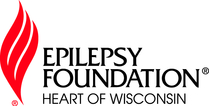Children with a genetic disorder known as 22q11.2 deletion syndrome
are often also diagnosed with autism at rates of up to 50 percent. But
those children may not be autistic, according to a new study from the
UC Davis MIND Institute.
The
disorder is caused by the deletion of a small part of the 22nd
chromosome, resulting in widely varying symptoms, such as heart
abnormalities or a cleft palate. Children with the disorder also
frequently suffer from developmental delay and social impairments, and
20 to 50 percent are diagnosed as falling somewhere on the autism
spectrum. The risk of the disorder is about 1 in 2,000.
UC Davis
researchers found that while those social impairments may mimic the
features of autism, in a study of 29 children with 22q11.2, none of
those children met "strict diagnostic criteria" for autism.
One
noticeable difference: they often seemed to have higher levels of social
motivation than children on the autism spectrum. Social deficits,
researchers noted, might be more a function of developmental delay
than autism.
The finding points to a need to develop different
treatments for children with 22q11.2, separate from those used in
children with autism. Further research is needed to determine what those
more appropriate treatments might be.
The study was published online Sept. 17 in the Journal of Autism and Developmental Disorders.
- Kristen V. Brown





